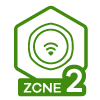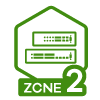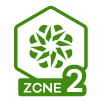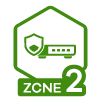Monitoring Stacking PoE Status on NCC
 Zyxel Employee
Zyxel Employee



Monitoring Stacking PoE Status on NCC
With the introduction of PoE support in our cloud-managed stacking switches, Nebula 18.0 provides comprehensive tools for monitoring PoE status and power consumption. This feature allows users to effectively manage and monitor the power usage of stacked PoE switches. Here’s what you need to know about monitoring stacking PoE status on the Nebula Control Center (NCC).
Overview of PoE Status Monitoring
PoE Status Summary
When you select a switch stack in the NCC and navigate to the switch detail page, you will find a PoE status section. This section provides a summary of the power consumption across all switches in the stack.
- Total Consumption vs. Total Budget: The PoE status displays the current total power consumption and the total power budget of the entire stack. For example, if the total consumption is 4.3 watts and the total budget is 375 watts, these values are aggregated across all units in the stack.
Detailed PoE Graph
Scrolling down on the switch detail page, you will encounter the PoE power consumption graph. This graph provides a visual representation of power usage over time and includes several key features:
- Current Power Utilization of Each Slot: Displays the real-time power usage percentage of each slot (e.g., slot one using 8.3%, slot two using 12.5%).
- Maximum and Minimum Consumption: Shows the peak and lowest power consumption within the selected zoom period (e.g., two hours, seven days). This allows you to identify periods of high and low power usage.
- Stacked Consumption Representation: The graph uses a stacked format to represent power consumption. Each slot's power usage is stacked on top of the previous slot, providing a cumulative view. It’s important to note that the values are cumulative, not overlapping. For instance, if slot one is at 50 watts and slot two adds another 50 watts, the combined consumption shown will be 100 watts, not just slot two’s 50 watts.
- Hover for Detailed Information: You can hover your mouse over different parts of the graph to see detailed power consumption data for each slot at specific times. This feature helps in analyzing and pinpointing power usage trends and anomalies.
Understanding PoE Graph
- Graph Interpretation: The graph’s y-axis represents the power consumption in watts, while the x-axis represents the time frame based on the selected zoom period.
- Stacked Display: Each colored section in the graph corresponds to a different slot, stacked one above the other to provide a clear visual representation of total power consumption.
Conclusion
The addition of PoE monitoring capabilities and flexible stacking ports in Nebula 18.00 significantly enhances the management and monitoring of PoE switches. Understanding and utilizing these features allows for more efficient network management and power usage optimization.
Categories
- All Categories
- 441 Beta Program
- 2.9K Nebula
- 208 Nebula Ideas
- 127 Nebula Status and Incidents
- 6.4K Security
- 533 USG FLEX H Series
- 334 Security Ideas
- 1.7K Switch
- 84 Switch Ideas
- 1.3K Wireless
- 51 Wireless Ideas
- 6.9K Consumer Product
- 294 Service & License
- 461 News and Release
- 90 Security Advisories
- 31 Education Center
- 10 [Campaign] Zyxel Network Detective
- 4.7K FAQ
- 34 Documents
- 86 About Community
- 99 Security Highlight